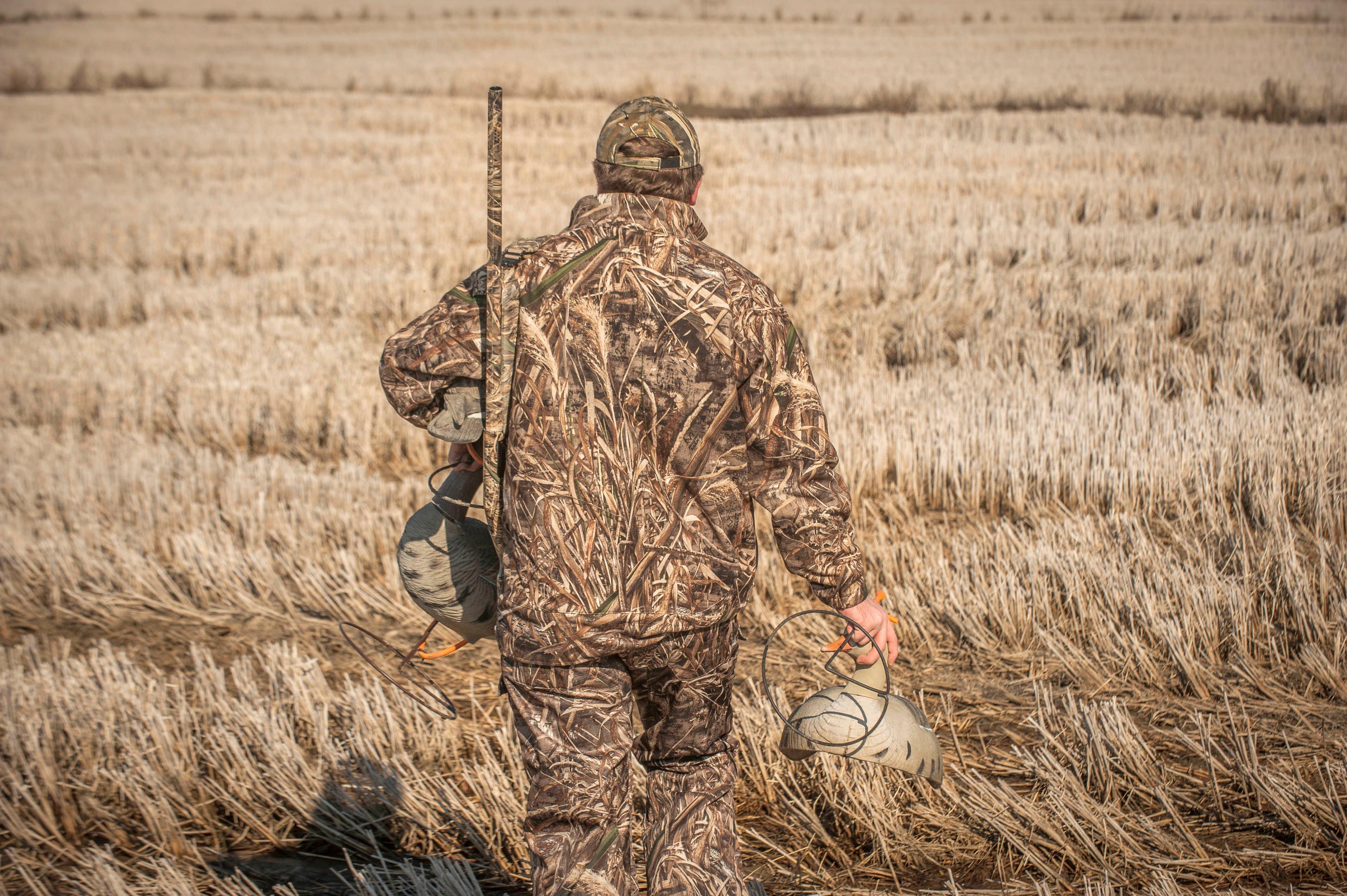Attention to Details Produces More Birds, Better Shooting
Waterfowling provides many striking moments, but few can rival the instant when approaching geese set their wings and begin that telltale glide into your lap. Great goose hunts burn into your memory forever.
But sometimes, potentially great hunts fall short. Maybe birds don't act right. Perhaps we goof up a flock or two, blowing prime opportunities. Or something might just be off. Now and then, we turn triumph into merely decent — or even poor — shoots.
The solution lies in details. Consistently successful goose hunters use critical observation and strict mental checklists to ensure they're set for success. Here's a quick primer.
Cover, Cover, Cover
You could write a long, boring book on this, but concealment is critical with geese. Insert cliché: If you aren't hidden, you ain't shooting. But it's true.
In a nutshell, make certain blinds, shooters and dogs blend into the landscape. Before shooting starts, view your setup from several angles to make sure nothing sticks out. Avoid creating suspicious-looking blobs when covering field blinds. Above all, don't be lazy. Use natural and manmade cover options to completely hide hunters — and then add more, provided it won't hamper shot chances.
Remember the Geese You're Hunting
Throughout the long season, you'll hunt several geese. Early season birds differ greatly from their migration- and hunting-hardened cousins. Fresh migrants behave much better than stale pseudo-locals that have been in town for two weeks. Identify the stage of the migration you're hunting, and act accordingly.
Throw out loads of decoys when chasing large peak-migration flocks, but pare down to several small family groups when pursuing locally raised birds. Put yourself in prime position for end-of-the-season honkers, which might make just one feeding flight per day — often right before shooting hours. You get the idea: Match the hatch.
Defining the Fine Line
So many potentially great hunts go wrong here, and blame usually falls on the pit boss. You must define when to take geese, whether that means firing at the first decent opportunity or waiting until entire flocks flutter yards away in your kill hole. When you choose incorrectly, the day can go sideways — swiftly.
Of course, everyone wants to pull multiple birds in close for easy shots. And when willing geese meet the perfect setup, that's realistic. But many days, smart birds skirt the edges of your setup or give you a few close passes before heading out. Use the first flock or two to identify what they want to do that day. If the initial group buys your setup and provides a slam-dunk, you can probably be selective when calling the shot on subsequent flocks. But if the first couple of groups seem interested but skeptical, you'd better shoot what you can the instant it's in range.
This isn't an exact science, so don't kick yourself too hard when you goof up. Gauge the general mood of geese and the potential efficiency of your setup, and go from there.
Cerebral Calling
A talented goose caller can hail birds from afar and seemingly bend their will, luring them off a distant flight path and into your lap. I'm not that guy. As such, I've had to learn when calling works and when it's best to shut up, and that equation changes by the day and sometimes with each flock.
Best tip: If you're at a destination field or water — that is, not running traffic — let the geese tell you how to call. Some days, they're quiet. Other days, they're extremely vocal. Match their level of talkativeness. And remember the basics: Call when birds are on the edges of your spread or going away. And if they're coming right in, you might want to shut up.
Take it Back to the Start
Here's the best goose hunting tip I ever received: Put goose decoys on goose poop. That is, identify the X — the small water or area of a hot feed where birds want to be. Then, set up there, hide yourself and try not to blow it.
Of course, identifying the best spots boils down to scouting. And that means lots of driving, seemingly endless glassing, working hard to gain access and then identifying the best approach for specific spots. Really, this is the most enjoyable part of the goose game. Identifying and executing a plan is much more satisfying than simply shooting a goose.
Besides, with keen scouting and preparation, you'll shoot loads of geese.
Click here for more Realtree waterfowl hunting content. And check us out on Facebook.







